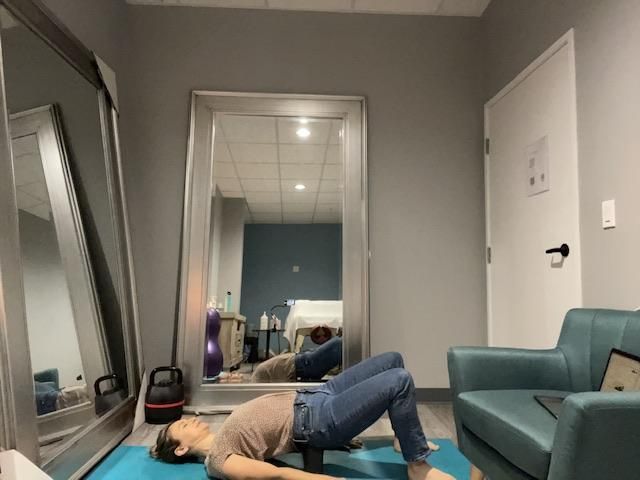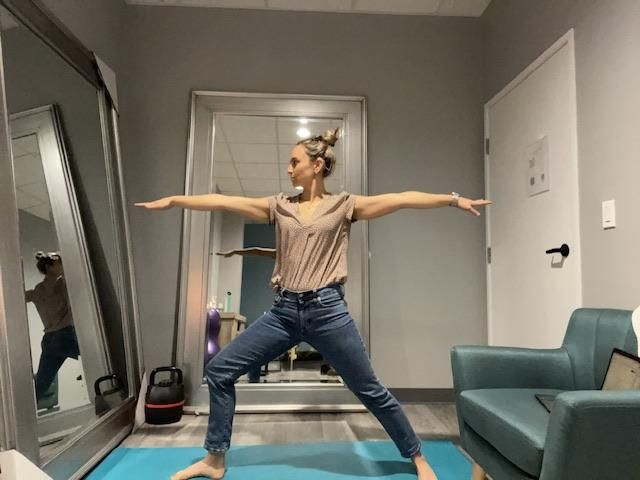
Yoga for Urinary Incontinence is a Thing
By Kasia Gondek PT, DPT, CSCS, certification in Yoga for Pelvic Pain through the Herman and Wallace Pelvic Rehabilitation Institute
When I am working with fitness or physical therapy clients, I often incorporate mindfulness, breathwork, and yoga postures (asanas) into our sessions together to cue pelvic floor muscle awareness. For thousands of years, yoga has been practiced daily as a discipline for the mind, body, and community to restore balance and overall health. Yoga has been shown to be useful in reducing anxiety, perceived stress, and autonomic nervous system imbalances that are risk factors for urinary incontinence. Yoga postures can improve and maintain general lower extremity and core muscle strength, balance, and conditioning, which has been shown to protect against incontinence in older females.1 An estimated 15 – 40% of females in their 40s to 60s experience some form of urinary incontinence.2
Pelvic Health Physical Therapy should be used to focus on:
- improving: strength, coordination, and endurance of pelvic floor muscles;
- overall core and hip strength;
- behavior modifications
- and education;
When focusing on the above, Pelvic Health Physical Therapy has proven very effective in providing conservative management techniques that manage and improve urinary incontinence.2
Yoga for urinary incontinence can reduce symptoms
Outside of the clinical physical therapy setting, many clients and patients want to know what they can do to improve their incontinence symptoms. Well, there is good news! The latest research finds that yoga based exercise can be effective at reducing urinary incontinence episodes and improving quality of life for those who are middle-aged without pelvic pain, neurological or other conditions that may hinder safe participation in yoga.
Before we dive into the recent science behind yoga for urinary incontinence, it’s important to know what the pelvic floor muscles do and how they are part of the deep core support system as a whole.
Our pelvic floor muscles have five main functions: pelvis support, internal organ support, bowel and bladder control, sexual function, and circulation. The pelvic floor muscles work with our other core canister muscles (abdominals, back muscles, diaphragm, and the glottis (throat)) to support our trunk and allow us to push, pull, lift, sneeze, cough, laugh, and exercise without pain or leakage of urine, feces, or gas! Muscle weakness, too much muscle tension, and / or delayed timing of muscle activation in this core canister can cause or contribute to urinary leakage. In other words, we need a healthy pelvic floor in order to have good bladder control!
A recent study presented at the 2021 American Urological Association Annual Meeting demonstrated that a regular yoga practice using an app-based program called Yoga for Immortals, “ShivYoga Play” found participants aged 18-74 had significant improvement in quality of life, and decreased incidences and severity of urinary leakage.3 The app cues pelvic floor muscle awareness and builds coordination of the pelvic floor muscles with abdominals, back muscles, and the diaphragm. Based on the findings of this study, this subscription-based app can be a promising alternative to in-person pelvic floor physical therapy for those who cannot access in-person pelvic floor physical therapy.
This app is not appropriate however for those with neurological medical conditions that impact balance, walking, and strength. Additionally, it is not appropriate for those with pain or other factors that may make it difficult to participate in an app-based format. Instead, in-person pelvic floor physical therapy may be more appropriate for these individuals due to the need for one-on-one personalized modifications, safety, and comfort.
Another study by Huang et al revealed that a twice-weekly 90-minute group yoga class, and once-weekly home yoga program for 60-minutes for 6 weeks decreased total incontinence frequency by 66% in the yoga therapy among females 40 years and older. Participants in the yoga therapy group also reported an average 85% decrease in stress incontinence frequency compared to a 25% increase in controls.1
A yoga based program to address urinary incontinence may be a good fit for you if:
- you have 7 instances or more of stress incontinence per week (either because of urge to urinate, or stress incontinence (urinary leakage with coughing, laughing, sneezing, or exertion of effort)
- you can walk up a single flight of stairs or at least two city blocks on level ground and you can stand up from a reclined position unaided within 10 seconds and
- you don’t have any medical conditions which would inhibit you from safe participation in exercise.1
Again, this group-style practice may not be appropriate for people with the following conditions/diseases: a neurologic disability that impacts balance, coordination, and ability to walk or move; interstitial cystitis/ painful bladder syndrome, chronic pelvic pain, frequent UTIs, cancer, symptomatic pelvic organ prolapse, or if you have a condition which makes participation in physical activity or exercise unsafe.
Lyengar Yoga-based Poses and Postures
The poses and postures which are used in the above study are Iyengar yoga-based. This style of practice focuses on proper joint alignment (through the use of props such as yoga blocks, bolsters, and yoga straps), and poses to strengthen core muscles, the hips and lower legs, and pelvic floor muscles. Throughout the sequence of these poses, there is always an emphasis on mindfulness, breath work (pranayama), and relaxation. Below are the key poses and postures used in the Iyengar Yoga based study discussed above. I have provided a suggested “flow” or sequence of these postures here as an example of what a yoga-based exercise program would look and feel like.
The below poses and postures are not medical advice and are not meant to substitute medical advice. These poses and postures may not be suitable for everyone. Please consult your medical provider prior to beginning exercise to make sure it is safe for you.
Standing postures: hold each pose for 5 – 8 breaths
Mountain pose

Chair pose
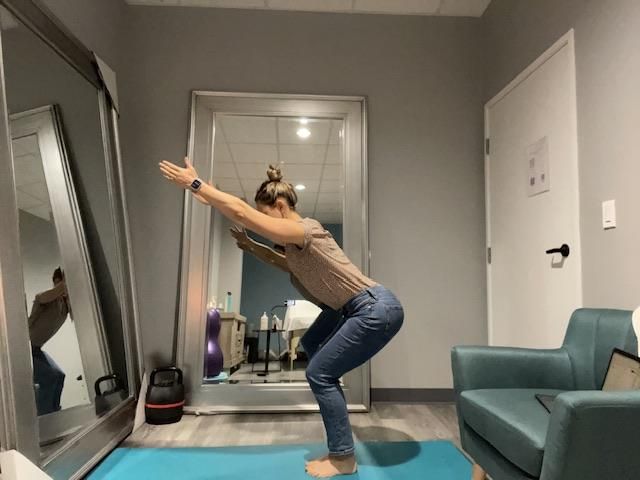
Warrior 2 with right foot forward, then left foot forward (5-8 breaths each)

Mountain pose

Side angle pose with right foot forward, then left foot forward (5-8 breaths each)
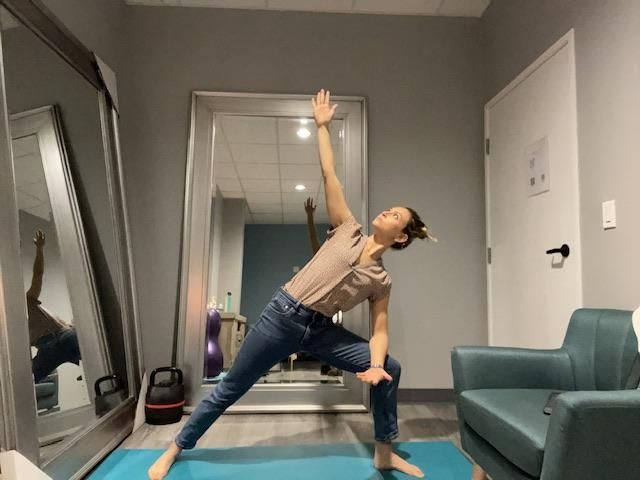
Intense side stretch pose with right foot forward, then left foot forward (5-8 breaths each)
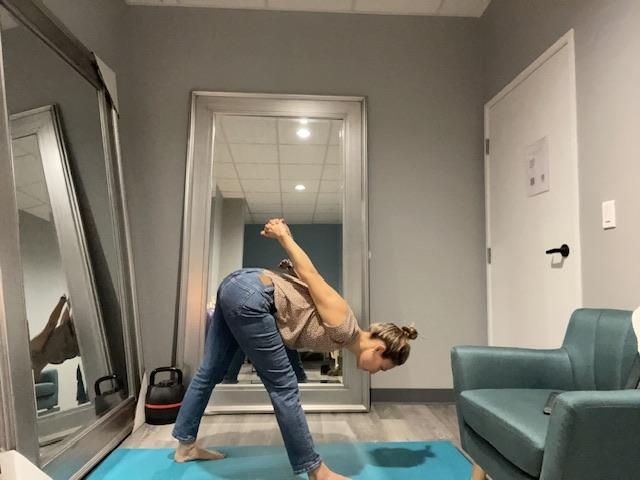
Mountain pose
Repeat the series 2 – 3 x
Seated Postures: hold each pose for 5 – 8 breaths
Bound Angle pose

Seated Twist pose with right ankle crossed over left thigh, then left ankle crossed over right thigh (5-8 breaths each)
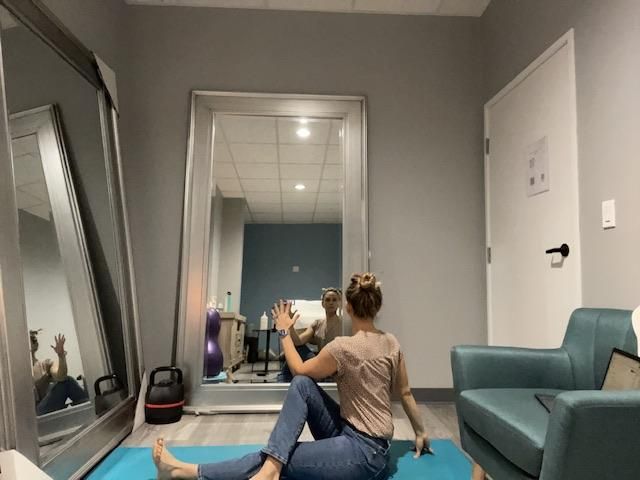
Squat pose

Supported Bridge pose
Reclined Big Toe pose Right foot reaching overhead, then left foot reaching overhead (5-8 breaths each)
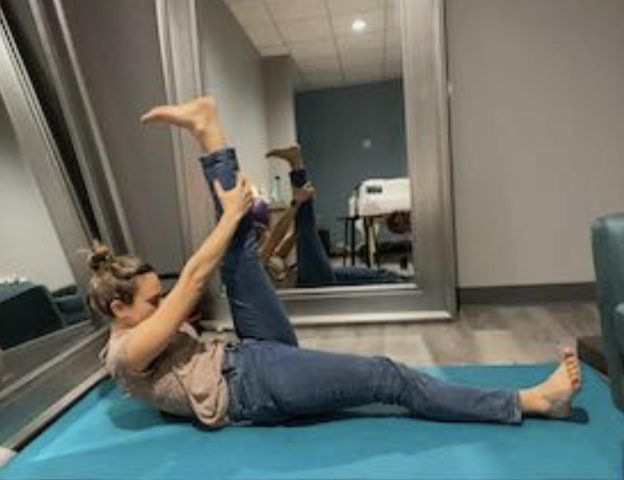
Reclined Bound Angle pose
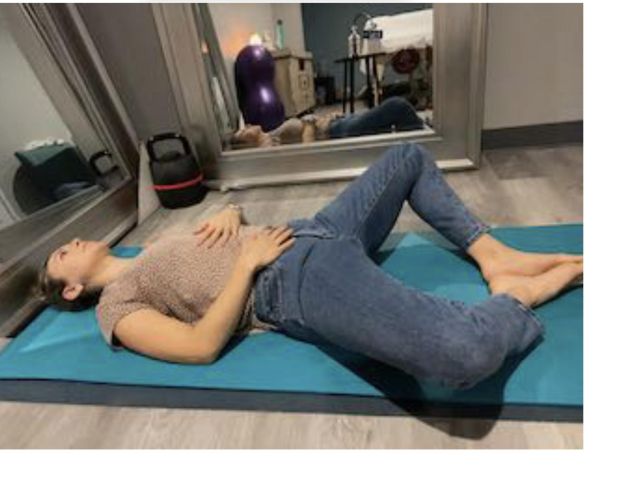
Laying down Poses:
Locust pose (Hold for 5 breaths)

Legs Up the Wall pose (hold for 8 breaths)
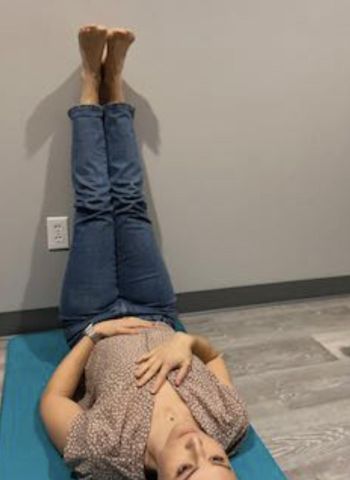
Corpse pose (remain in this resting pose for 3 minutes to close your practice)
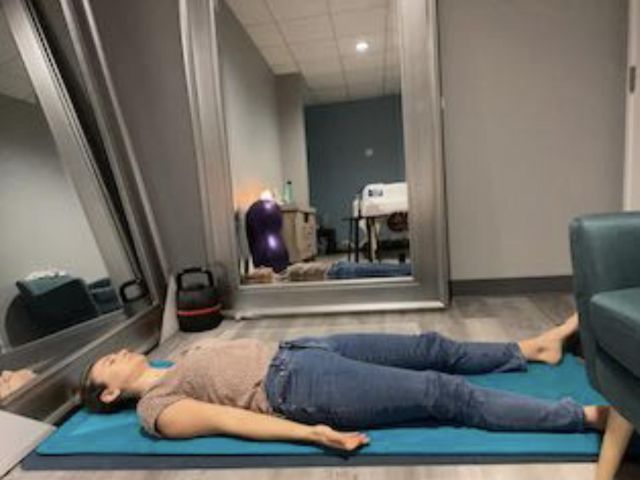
Contact us here if you’re ready to start some targeted yoga for urinary incontinence.
Resources:
- Huang AJ, et al. A group-based yoga therapy intervention for urinary incontinence in women: a pilot randomized trial. Female Pelvic Med Reconstr Surg. 2014;20(3):147-154. doi:10.1097/SPV.0000000000000072
- Wieland LS, Shrestha N, Lassi ZS, Panda S, Chiaramonte D, Skoetz N. Yoga for treating urinary incontinence in women. Cochrane Database Syst Rev. 2019;2(2):CD012668. Published 2019 Feb 28. doi:10.1002/14651858.CD012668.pub2
- Tunuguntla HSGR, et al. App-Based Yoga of Immortals: A Novel Easy-to-use Intervention in the Management of Urinary Incontinence. Female Urology. 2022;167(6):73-81.doi.org/10.1016/j.urology.2022.06.011

